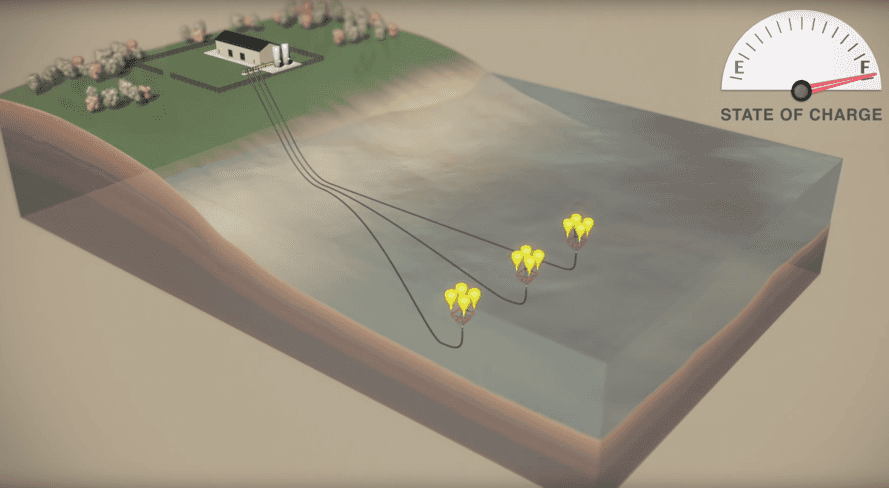Tuesday, 06/01/2026 | 19:08 GMT+7
Greentech Media reports that Toronto-based startup Hydrostor currently has a two-year pilot project underway that involves a set of pipes running about two miles out into Lake Ontario that pumps air into underwater balloons, where it’s stored before later being released and expanded to produce energy. The project aims to help the city’s hydro utility extend the life of its distribution equipment by providing electricity for peak periods – and reduce the utility’s reliance on fossil fuel energy sources.
How, exactly does it work? Compressed air, pressurized to match the lake bottom’s water pressure is pumped into the heavy-duty underwater balloons through the pipes, where it’s stored until electricity is needed. At that time, the system reverses itself and the water’s weight pushes the air back through the pipes, where it’s converted back into electricity.

The current Toronto pilot project is just 1 megawatt, but Hydrostor plans to offer up to 100 MW options. The cost of the energy from a 10 MW system like this would be about $250 per kilowatt hour, which is significantly cheaper than current, on-land compressed air storage.
The reason the company can produce the systems so cheaply lies in their use of simple, off-the-shelf technologies that defer the need for a complex manufacturing process. Add to that its drilling techniques that reduce the demand for boats and cranes, and you’ve got a cost-effective system. According to Greentech Media, the systems will come with a 10-year warranty that could be expanded to 20 years after the pilot is completed.
Mai Linh (theo Inhabitat)








 Webinar 2: “Financial Support for Energy Efficiency Enterprises – Opportunities and Challenges”
Webinar 2: “Financial Support for Energy Efficiency Enterprises – Opportunities and Challenges”
 Vietnamese enterprises achieve green growth and cut costs through energy efficiency
Vietnamese enterprises achieve green growth and cut costs through energy efficiency
 Capacity Building for Program Implementing Entity
Capacity Building for Program Implementing Entity
 Enhance Energy Efficiency Knowledge for Managers of Cement Industrial Enterprises
Enhance Energy Efficiency Knowledge for Managers of Cement Industrial Enterprises
 Capacity building for participating financial institutions in Ho Chi Minh City
Capacity building for participating financial institutions in Ho Chi Minh City
 Strengthening capacity for energy management officers of local government agencies
Strengthening capacity for energy management officers of local government agencies
 Steel Enterprises Saving Energy and Enhancing Competitiveness
Steel Enterprises Saving Energy and Enhancing Competitiveness